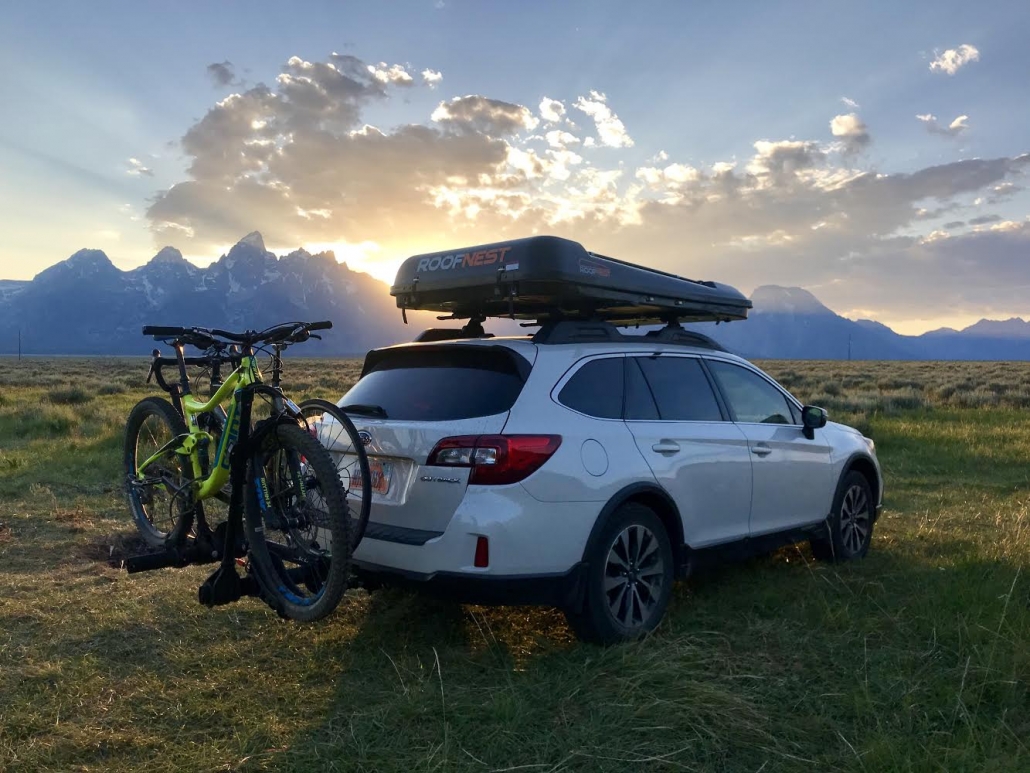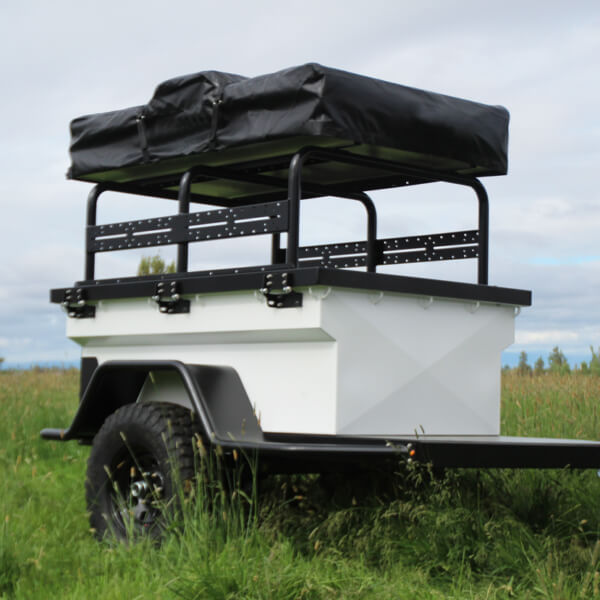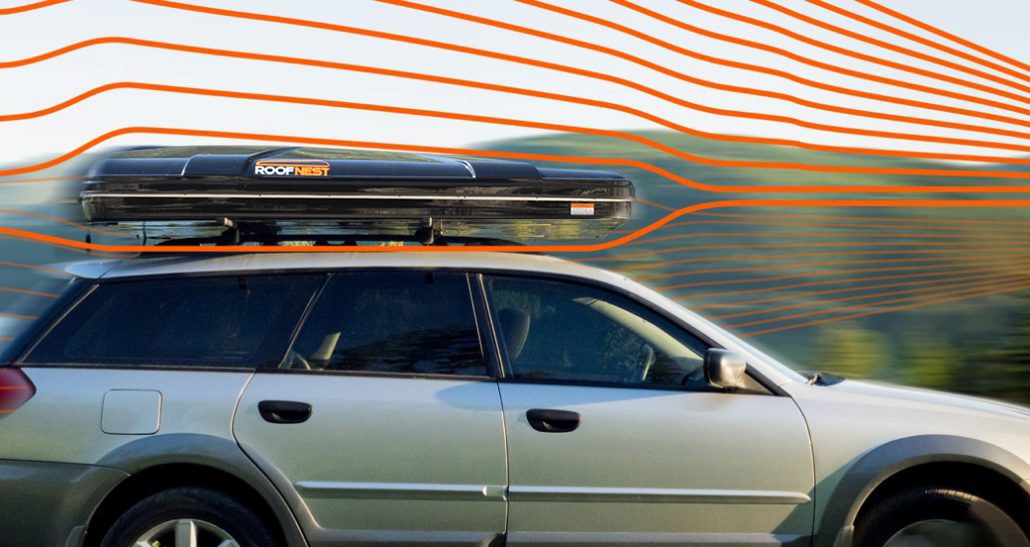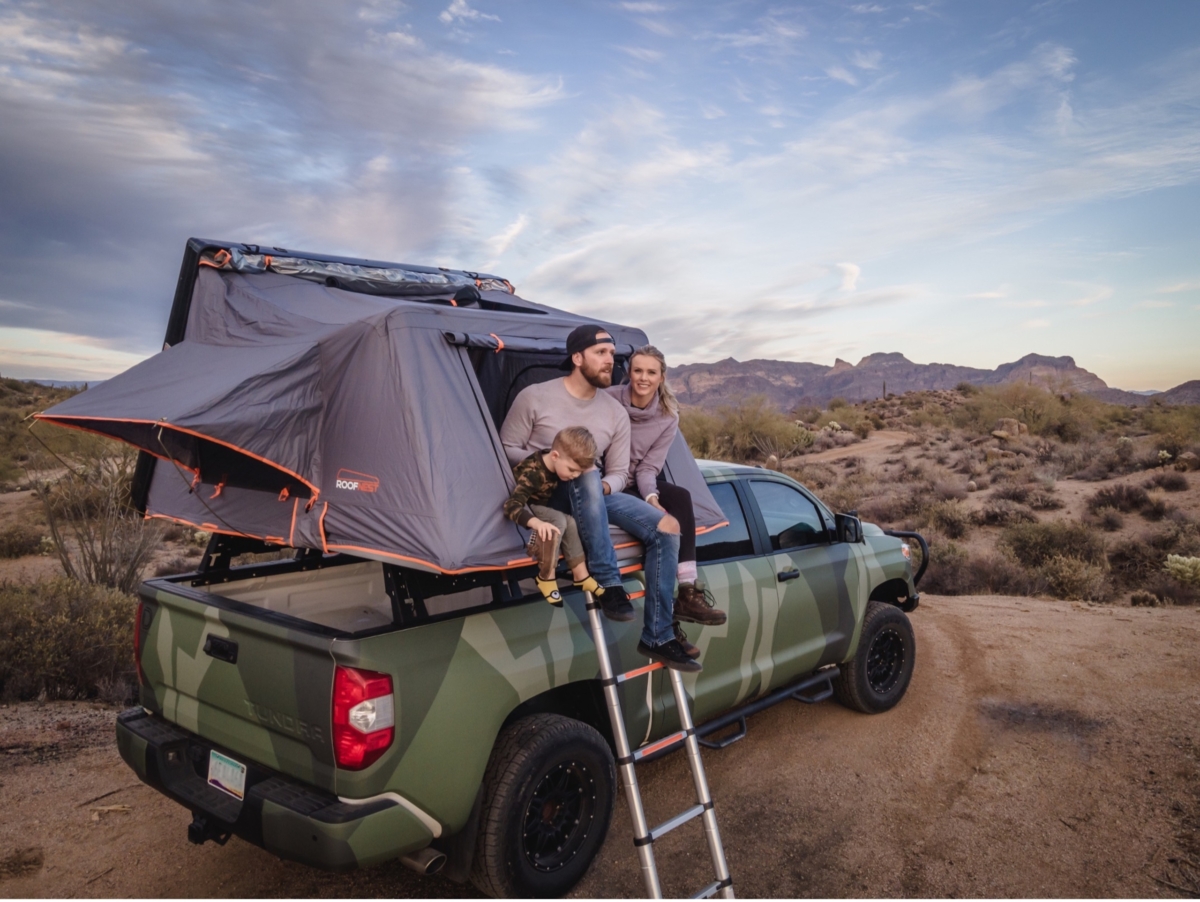in Roofnest Tips & Features / by Tim Nickles

Hard shell roof top tents are a whole new way to go car camping. Although they’ve been around for a better part of the last decade, they’ve more recently begun breaking onto the camping scene in a big way.
More and more campers are turning to Roofnests, and for good reason. You can transform your car into a traveling tent, allowing you to camp wherever you can park your car — at music festivals, in the back country, or at the beach — you name it.
In 2019, you’ll likely start seeing them everywhere you go (if you don’t already). A hard shell roof top tent like a car-top storage box, but they pop up to form an enclosed, protected, comfortable bedroom.
If you’re thinking about getting into the roof top tent game or you’re considering upgrading from a different kind of vehicle tent, one thing you’ll want to consider is whether to get a hard shell roof top tent or a soft shell roof top tent. Keep reading to check out the key considerations that should factor into your decision between a hard shell or soft shell roof top tent.
Soft Shell Roof Top Tents
PROS
More Living Space

A soft shell model typically allows more living space, and can accommodate more people. Because they fold out from the footprint on your roof, these tents often have more floor area when deployed, and can sleep more people. If you have a family of four, this can be a critical pro.
An added feature to these tents is the small awning created by the landing that is suspended off the side of the vehicle. This covering can provide a small shaded area for lounging or setting up a prep area for food and cooking clean up that’s protected from the elements.
Provides Shade
When deployed, there is space underneath the extended tent which can provide shade and protection. The caveat is that if you have a smaller car, this becomes a con — the space becomes unusable and it makes it harder to get in your car if you need anything.
Size

Soft shell roof top tents are typically smaller in size for transport, but can open up and allow for extra quarters to be attached and essentially double in size. Depending on the specific model, you can often fit multiple people in the tent with ample room to move around.
CONS
Taller Footprint on Top of Your Car, Both in Weight and Aerodynamics
Most soft shell roof top tents are tall and blocky when closed, which affects gas mileage, road noise, and overall appearance on top of your car much more than a hard shell roof top tent.
Longer Setup and Take-Down Time
Because soft shell roof top tents require a protective cover, must be folded out, and require tent poles, they’re harder to set up and exponentially harder to take down (especially in any kind of bad weather – rain, wind especially, and snow).
Not Waterproof
A soft shell roof top tent is made from fabric, meaning it’s not as waterproof as a Roofnest, which is made from plastic and/or fiberglass.
Noisier in the Wind
Soft shell roof top tents have fabric and poles, leading to inevitable flapping in the wind despite best efforts to secure everything.
Hard Shell Roof Top Tents
PROS
Aerodynamic and Attractive Shape

Hard shell roof top tents are a relatively newer and more improved-upon product than their soft shell roof top tent counterparts. One of the biggest draws to the hard shell model is the aerodynamic capability when traveling.
Soft shell roof top tents don’t collapse completely flat, which provides less stability among long, high-speed road trips and tight overlanding routes.
Our Roofnest models are designed with an aerodynamic shape that allows you to drive without worrying about losing your tent, hindering your gas mileage, or being slowed down on the road to your destination.
Speedy setup
Hard shell roof top tents provide a large advantage in the ease of setup and takedown. With a Roofnest, its as simple as four clasps and two handles for the actual set-up and take-down.
Our roof top tents less than 30 seconds to set up. You read that right. The built-in gas struts inside our tents make it incredibly easy to simply push up on the tent to open it, and a light pull down to close. One person is able to do it alone with ease and in minutes.
Plus, there’s room inside your Roofnest to store your sleeping bags while the tent is closed.
Closing the tent only requires a bit more effort — you pull each side down and stuff the tent material between the shells, latch the buckles, and away you go.
Weatherproof
The impermeable top combined with the taught, vertical tent walls makes the tent virtually weatherproof and quiet in the wind.
Complete Comfort
While some soft shell roof top tents have mattresses as thick as Roofnest’s 3-inch mattress, most don’t because the mattress has to fold over on itself to close the tent. That’s a big deal if you like sleeping in a comfortable tent…and who doesn’t?
Living Space

Most hard shell roof top tents tend raise up completely, almost always allowing four entirely vertical walls (unless you go with an “eye model, like our Sparrow Eye).
In comparison, many soft shell roof top tents have sloped walls inside the sleeping area due to the shape and design. Inside a hard shell roof top tent, every inch of livable space is optimized to provide as much room inside as possible for any sized camper to be able to sleep comfortably.
CONS
Sleeping Area Size
This is the main advantage that soft shell roof top tents have over hard shell roof top tents like the Roofnest. If you’re by yourself, with a friend, or with your partner and a small child, a Roofnest will be the perfect size for your camping party.
The Verdict
Both types of roof top tents provide a comfortable way to camp off the ground with different attractive features. Whether you value more living space or a certain amount of roof space to give on your vehicle, there’s an option to suit your needs.
But it’s no secret that the pros are pretty stacked for hard shell roof top tents — better waterproofing, more comfort, and quicker and easier setup aren’t qualities that many campers want to compromise in their tent.
In minutes you can have your Roofnest set up or on the move, enjoy the most utilized sleeping space, and be ready to hit the road with no impact on your gas mileage.
Ready to revolutionize your next camp experience? Check out our newest Roofnest models >
You might also like

Glamping vs. Car Camping: Why You Should Experience a Roof Top Tent
Being quarantined inside was probably not what you had planned for 2020. We’re right there with you. With COVID regulations […]

Which Hard Shell Roof Top Tent is Right for Families?
Family camping trips can mean the world to the ones you love. They’re opportunities to reset and relax with your […]

What Kind of Roof Rack Do I Need for a Hard Shell Roof Top Tent?
So you’ve decided to get a hard shell roof top tent. Now you need to know what kind of roof […]
